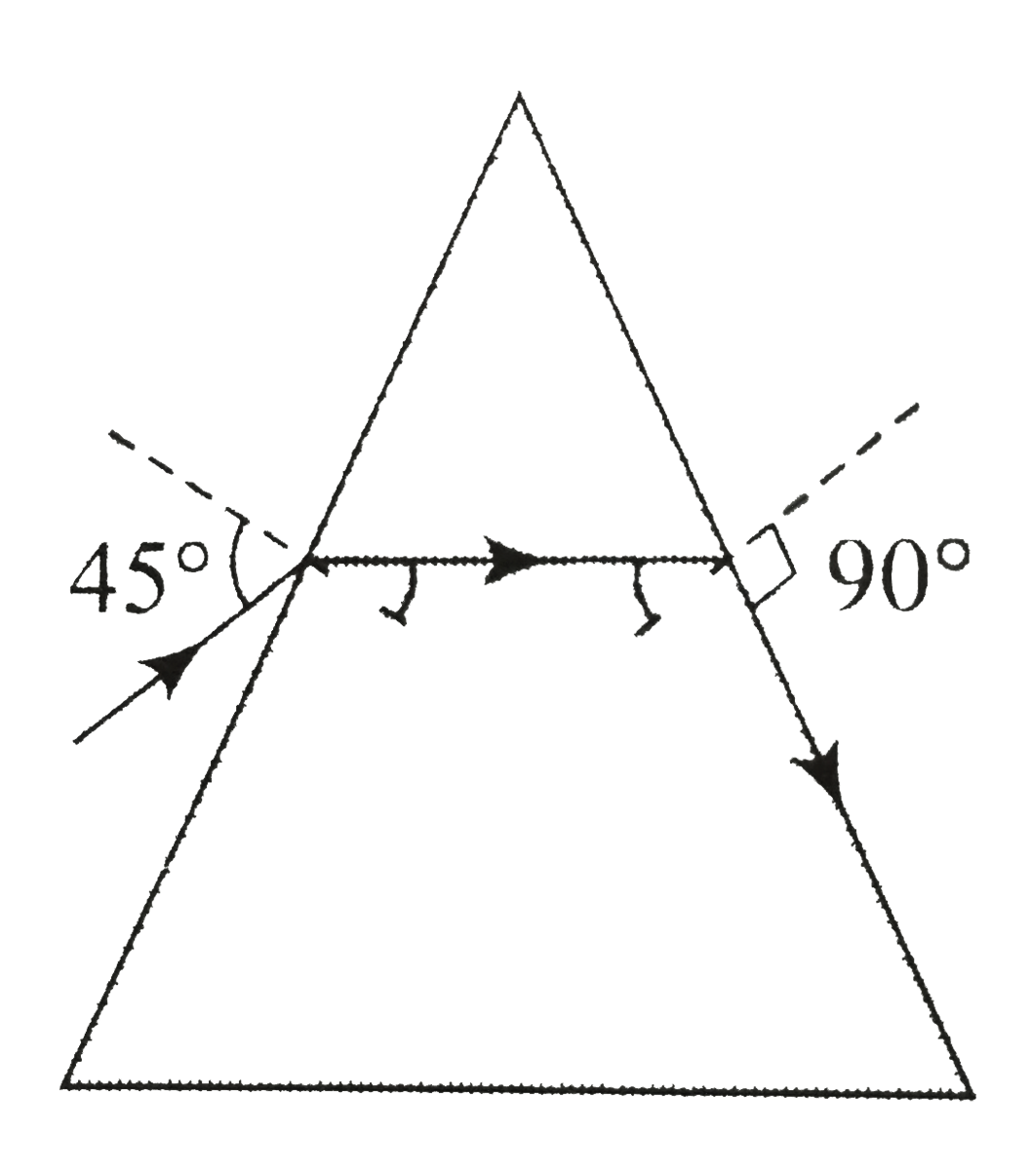When a ray of light is refracted by a prism such that the angle of deviation is minimum, then
the angle of emergence is equal to the angle of incidence
the angle of emergence is greater than the angle of incidence
the angle of emergence is smaller than the angle of incidence
the sum of the angle of incidence and the angle of emergence is equal to90∘
The correct Answer is:A
Step by step video, text & image solution for When a ray of light is refracted by a prism such that the angle of deviation is minimum, then by Physics experts to help you in doubts & scoring excellent marks in Class 12 exams.
Topper's Solved these Questions
- BOOK - MOTIONCHAPTER - RAY OPTICSEXERCISE - Exercise-239videos
RAY OPTICS
- BOOK - MOTIONCHAPTER - RAY OPTICSEXERCISE - Exercise-365videos
RAY OPTICS
- BOOK - MOTIONCHAPTER - RAY OPTICSEXERCISE - Questions For Practice29videos
RAY OPTICS
- BOOK - MOTIONCHAPTER - RADIOACTIVITY & NUCLEAR PHYSICSEXERCISE - Exercise-381videos
RADIOACTIVITY & NUCLEAR PHYSICS
- BOOK - MOTIONCHAPTER - ROTATIONAL MOTION EXERCISE - Exercise - 3 ( Section-B )24videos
ROTATIONAL MOTION
Similar Questions
(a) If the refracting angle of a prism is 60∘ and the minimum deviation is 30∘, then find the angle of incidence.
(b) A ray of light passes through an equilateral prism such that the angle of emergence is equal to the angle of incidence and each is equal to 3/4th of the angle of prism. Find the angle of deviation.
(c) The refracting of a prism is A and the refractive index of the material of the prism is cotA/2. Find the angle of deviation.
(d) The angle of a prism is 60∘. What is the angle of incidence for minimum deviation? The refractive index of the material of the prism is √2.View SolutionIn an isosceles prism of prism angle 45∘, it is found that when the angle of incidence is same as the prism angle, the emergent ray grazes the emergent surface. Find the refractive index of the material of the prism.For what angle of incidence the angle of deviation will be minimum ?
View Solution
Knowledge Check
- Question 1 - Select One
A ray of light is incident on a 60∘ prism at the minimum deviation position. The angle of refraction at the first face (i.e. incident face) of the prism is-
AzeroB30∘C45∘D60∘ - Question 2 - Select One
The angle of incidence for a ray of light at a refracting surface of a prism is 45∘. The angle of prism is 60∘. If the ray suffers minimum deviation through the prism, then the angle of minimum deviation is:
A30∘B60∘C45∘D90∘ - Question 3 - Select One
The angle of incidence for a ray of light at a refracting surface of a prism is 45∘. The angle of prism is 60∘. If the ray suffers minimum deviation through the prism, the angle of minimum deviation and refractive index of the material of the prism respectively, are :
A45∘,1√2B30∘,√2C45∘,√2D30∘,1√2
In an isosceles prism of angle 45∘, it is found that when the angle of incidence is same as the prism angle, the emergen ray grazes the emergent surface.
Find the refractive index of the material of the prism. For what angle of incidenc, the angle of deviation will be minimum?
 View Solution
View SolutionThe angle of incidence for a ray of light at a refracting surface of a prism is 45∘. The angle of prism is 60∘ . If the ray suffers minimum deviation through the prism. The angle of minimum deviation and refractive index of the material of the prism respectively, are
View SolutionThe angle of incidence for a ray of light at a refracting surface of a prism is 45∘. The angle of prism is 60∘. If the ray suffers minimum deviation through the prism, the angle of minimum deviation and refractive index of the material of the prism respectively, are :
View SolutionThe angel of incidence for a fay of light at a refracting sufrace of a prism is 45∘. The angle of prism is 60∘ If the ray suffers minimum deviation through the prism, the angle of minimum deviation and refractive index of the material of the prism repectively, are
View SolutionWhen a ray of light falls on a prism of angle 48∘ , it suffers minimum deviation. Refractive index of the material of prism is 1.6. The angle of incidence is nearly
View Solution

